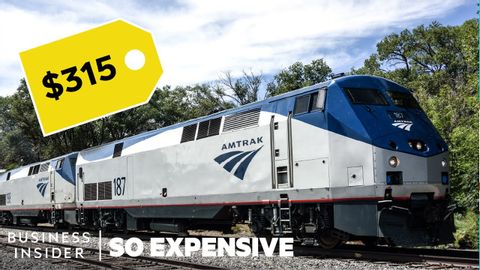为什么美铁这么贵(Why Amtrak Is So Expensive | So Expensive)
joey joey 發佈於 2021 年 05 月 29 日  沒有此條件下的單字
沒有此條件下的單字US /ˈrevənju/
・
UK /'revənju:/
- n. (c./u.)收益;稅收;收入;稅務局;營業收入
US /əˈtɛmpt/
・
UK /ə'tempt/
US /əˈprɑksəmɪtlɪ/
・
UK /əˈprɒksɪmətli/
US /ɪkˈsprɛs/
・
UK /ɪk'spres/
- v.t.快運;快遞;表達
- adj.快運的;快遞的;高速的;明確的;快速的
- n.快線;快遞

